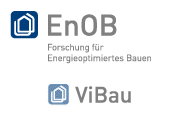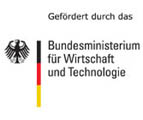Vacuum insulation panels: Background
The principle of achieving low thermal conductivity via evacuation is known
from the Thermos flask, which comprises a doubled-walled glass envelope. The
space between the glass cylinders is evacuated to about 10 - 6 mbar
in order to suppress gaseous conduction. The glass surfaces are coated with
a heat-reflecting metal layer to suppress radiative thermal transfer. Such
Dewar flasks were first made by the chemist and physicist, Sir James Dewar,
around 1890. The first commercially manufactured vacuum flasks were produced
by the German company Thermos GmbH (hence the trade name) in 1904.
If a void is evacuated, the envelope is loaded with 1 bar atmospheric
pressure which corresponds to 10 t per m². Due to the cylindrical
form of the glass or stainless steel casing, Thermos flasks and cryogenic
vessels can withstand such pressures. Evacuated flat insulation elements,
required in the building industry, need to have a load-bearing filling material
to take up the atmospheric pressure load. The thermal conduction across the
solid core should be kept as small as possible. The core must therefore have
a high porosity.
Linde AG developed a procedure for thermally insulating pipes in 1971. Flat
vacuum insulation panels were first developed in the 1970s for use in refrigerators
and freezers. Specially developed high-barrier foils were used as envelopes
instead of the stainless steel or glass previously used in Thermos flasks.
Modern high-barrier foils comprise several layers of metal-coated plastic.
The coating reduces leakage. Nanostructured filling materials with pore sizes
< 100 nm are used for the core. Instead of a high vacuum as in
Thermos flasks, a pressure reduction to 1 mbar is sufficient to completely
suppress gaseous conduction in such nanoporous cores.
Measurements and tests carried out on VIPs over the last years indicate that
the necessary vacuum can be maintained for 30 to 50 years, making them suitable
for building applications. Increasingly stricter demands are being made on
insulation to reduce energy consumption and CO2 emissions. Research
is still being carried out to further improve the foils and cores.


